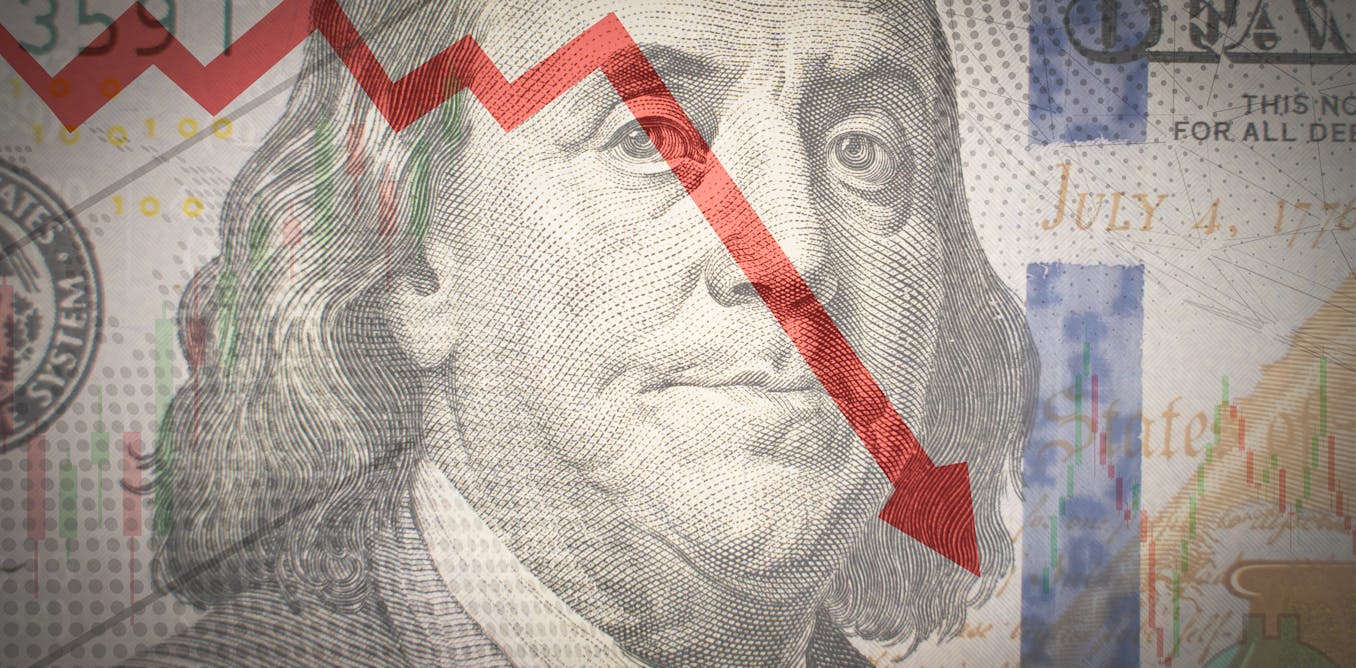For years, I’ve puzzled over a question that seems to defy common sense: If stock markets are hitting records and tech innovation seems endless, why aren’t companies pouring money back into new projects?
Yes, they’re still investing – but the pace of business spending is slower than you’d expect, especially outside of AI.
And if you’ve noticed headlines about sluggish business spending even as corporate profits soar, you’re not alone. It’s a puzzle that’s confounded economists, policymakers and investors for decades. Back in 1975, U.S. public companies reinvested an average of 25 cents for every dollar on their balance sheets. Today, that figure is closer to 12 cents.
In other words, corporate America is flush with cash, but it’s surprisingly stingy about reinvesting in its own future. What happened?
I’m an economist, and my colleague Gustavo Grullon and I recently published a study in the Journal of Finance that turns the field’s conventional wisdom on its head. Our research suggests the issue isn’t cautious executives or jittery markets – it’s about how economists have historically measured companies’ incentives to invest in the first place.
Asking the wrong Q
For decades, economists have relied on a simple but appealing ratio – Tobin’s Q, named after the famous economist James Tobin – to gauge whether companies should ramp up investment.
They calculate this by dividing a company’s market value – what it would take to purchase the firm outright with cash – by its replacement value, or how much it would cost to rebuild the company from scratch. The result is called “Q.” The higher the Q, the theory goes, the more incentive executives have to invest.
But reality hasn’t conformed to fit the theory. Over the past half-century, Tobin’s Q has gone up, yet investment rates have gone down sharply.
Why the disconnect? Our research points to one key culprit: excess capacity. Many U.S. companies already have more factories, machines or service capability than they can use. By not correcting for this issue, the traditional Tobin’s Q will overstate the incentive that companies have to grow.
To see this, consider a commercial real estate company that owns a portfolio of office buildings. In recent years, with the rise of e-commerce and remote work, many of their properties have been running well below capacity. Now suppose a few new tenants start paying rent and begin absorbing a portion of that empty space. Stock prices will rise in response to seeing these new cash flows, which in turn will lead Q to rise.
Traditionally, this increase in Q would suggest that it’s a good time to invest in new buildings – but the reality is quite different with idle capacity still in the system. Why pour money into building another office tower if existing ones still have empty floors?
This key idea is that what matters isn’t the average value of all assets – it’s the marginal value of adding one more dollar of investment. And because capacity utilization has been steadily eroding over the past half-century, many firms see little reason to invest.
That last point may come as a surprise, but the U.S. economy, with all its factories and offices, isn’t nearly as abuzz with activity as it was after, say, World War II. Today, many sectors operate well below full throttle. This growing slack in the system over time helps explain why companies have pulled back on their rate of investment, even as profits and market values climb.
Why has capacity utilization fallen so much over the past half-century? It’s not entirely clear, but what economists call “structural economic rigidities” – things such as regulatory hurdles, labor market frictions or shifts in cost structure – seem to be part of the answer. These factors can drag businesses into a state of chronic underuse, especially after recessions.
Why it matters
This isn’t just an academic debate. The implications are profound, whether you closely follow Wall Street or just enjoy armchair economic policy debates. For one thing, this dynamic might help explain why tax cuts haven’t spurred investment the way supporters have hoped.
Take the 2017 Tax Cuts and Jobs Act, which slashed the top corporate tax rate from 35% to 21% and introduced full expensing for equipment investments. Supporters promised a wave of new investment.
But when my colleague and I looked at the numbers, we found the opposite. In the four years before the tax cuts, publicly traded U.S. firms had an aggregate investment rate, including intangibles, of 13.9%. In the four years after the tax cut, the average investment rate fell to 12.4% – in other words, no evidence of a bump.
Where did those liberated cash flows go? Instead of plowing this newfound cash after the tax cuts into new projects, many companies funneled it into stock buybacks and dividends.
In retrospect, this makes sense. If a company has excess capacity, the incentive to invest should be more muted, even if new machines are suddenly cheaper thanks to tax breaks. If the demand isn’t there, why buy them?
Even with the most generous tax incentives, the core challenge remains: You can’t force-feed investment into an economy already swimming in excess capacity. If companies don’t see real, scalable demand, tax breaks alone aren’t likely to unlock a new era of business spending.
That doesn’t mean tax policy doesn’t matter – it does, especially for smaller firms with real growth prospects. But for the large, well-established firms that make up the lion’s share of the economy, the bigger challenge is demand. Rather than trying to stimulate even more investment, policymakers should prioritize understanding why demand is sagging relative to supply and reducing economic rigidities where they can. That way, the capacity generated by new investment has somewhere useful to go.



